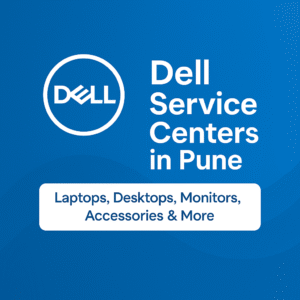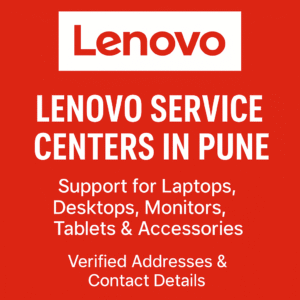
Why Buy a Refurbished Laptop?
Refurbished laptops offer a fantastic opportunity to get a high-quality device at a fraction of the price of a brand-new one. These laptops are typically returned to manufacturers or authorized refurbishers due to issues like minor defects, returns, or end-of-life models. After undergoing thorough testing, repair, and sometimes even upgrades, they’re put back on the market for resale.
Buying a refurbished laptop can be a smart choice for those who need a reliable machine but are working with a budget. However, because refurbished laptops come in all shapes and sizes, it’s important to know how to choose the best one for your needs. In this post, we’ll help you navigate the process of selecting the ideal refurbished laptop.
1. Understand Your Needs and Budget
Before diving into the world of refurbished laptops, it’s essential to understand your needs and budget. The type of work you plan on doing with your laptop will directly affect the specifications you should be looking for. Here are some factors to consider:
- Basic Use: If you primarily use your laptop for web browsing, email, and word processing, you won’t need the latest and most powerful specs. A laptop with an older processor, 4-8GB of RAM, and basic storage will be sufficient.
- Multitasking and Productivity: If you need to run multiple programs at once, edit documents, or use productivity software like spreadsheets and presentation tools, aim for a laptop with at least an Intel Core i5 or i7 processor and 8GB or more of RAM.
- Gaming or Creative Work: For tasks like gaming, video editing, or graphic design, you’ll need a more powerful machine with a dedicated graphics card (GPU), a high-resolution display, and a more powerful processor like Intel Core i7 or AMD Ryzen 7.
- Portability: If you need a lightweight, portable laptop for travel or commuting, look for a compact 13-inch or 14-inch laptop with a slim profile and long battery life.
Once you have a clear idea of what you need, set a realistic budget. Refurbished laptops are usually significantly cheaper than new ones, but prices can vary based on the model and condition.
2. Check the Refurbishment Process
Not all refurbished laptops are created equal. It’s crucial to ensure that the laptop you’re considering has gone through a thorough refurbishment process. Reputable sellers or manufacturers usually follow strict procedures, including:
- Hardware Testing: The laptop should undergo comprehensive testing to ensure all hardware components are functioning properly, including the processor, RAM, hard drive, and display.
- Cleaning and Repairs: A good refurbisher will clean the laptop inside and out, removing dust and debris from the components. Any broken or damaged parts should be replaced with new or certified working parts.
- Software Updates: The laptop should come with the latest operating system updates and necessary software installations to ensure it’s ready for use.
If the refurbished laptop comes from a manufacturer’s official refurbishing program (like Apple’s, Dell’s, or Lenovo’s), it’s more likely to have undergone this rigorous testing process.
3. Look for Warranty and Return Policies
One of the biggest advantages of buying a refurbished laptop is the warranty. While refurbished laptops may not have the same warranty as new ones, many reputable sellers offer a limited warranty that can provide peace of mind. Look for:
- Warranty Length: A warranty of at least 90 days is typical for refurbished laptops, but some sellers or manufacturers may offer a full 1-year warranty.
- Return Policy: Make sure the seller has a flexible return policy, allowing you to return or exchange the laptop if it doesn’t meet your expectations or has defects.
- Technical Support: Check if the seller or manufacturer offers customer support, especially if you encounter any issues with your refurbished laptop.
4. Inspect the Laptop’s Physical Condition
Since refurbished laptops have been previously owned or used, their physical condition may vary. While they are typically tested for performance and functionality, it’s still important to check for any visible wear and tear. Some common signs of damage might include:
- Scratches or Dents: Light cosmetic imperfections like scratches or small dents are common in refurbished models, but they should not affect the laptop’s performance.
- Screen Condition: Ensure the screen is free of dead pixels, cracks, or discoloration.
- Battery Health: The battery should hold a reasonable charge. While batteries tend to degrade over time, a good refurbished laptop will have a battery that works properly, although it may not last as long as a brand-new one.
Most reputable sellers will provide clear information about the laptop’s physical condition, such as “Grade A” (like new), “Grade B” (minor cosmetic issues), or “Grade C” (noticeable wear and tear).
5. Check the Specifications and Features
When buying a refurbished laptop, always double-check the specifications to ensure they match your needs. Here are the key specs to pay attention to:
- Processor: Look for a recent model processor, such as Intel Core i5, i7, or AMD Ryzen. Older processors may be slower and struggle with more demanding tasks.
- RAM: Aim for at least 8GB of RAM for smooth multitasking. For more intensive tasks, go for 16GB or more.
- Storage: Opt for an SSD (solid-state drive) over an HDD (hard disk drive) for faster boot times and quicker access to files. A 256GB SSD is a good minimum for most users.
- Display: A higher resolution display (1080p or above) provides sharper visuals. If you plan on using your laptop for creative tasks, consider a laptop with a color-accurate screen.
- Ports and Connectivity: Make sure the laptop has the ports you need (USB, HDMI, etc.) and supports modern wireless standards like Wi-Fi 6 and Bluetooth 5.0.
6. Read Reviews and Seller Feedback
Before making your purchase, always check customer reviews and feedback about the refurbished laptop and the seller. Reviews can give you insights into the product’s performance, any issues other buyers have faced, and the seller’s reliability.
Look for reviews on:
- Product Quality: Check if the laptop is performing as expected. Look for feedback on battery life, speed, and functionality.
- Seller Reputation: Make sure the seller has a history of providing high-quality refurbished laptops with good customer service.
- Return and Support Experience: If customers had to return their laptops, see how smooth the process was and how helpful the support team was.
7. Buy from Reputable Sources
To ensure you’re getting a reliable refurbished laptop, buy from reputable sources. Here are a few options:
- Manufacturer Refurbished Programs: Brands like Apple, Dell, Lenovo, and HP offer their own certified refurbished laptops directly from their websites or authorized resellers.
- Trusted Retailers: Large retailers like Amazon, Best Buy, and Newegg sell refurbished laptops from well-known brands. Look for sellers with a high rating and positive reviews.
- Refurbished Specialist Stores: There are companies that specialize in refurbishing and selling high-quality laptops, such as Gazelle, Back Market, or Micro Center.
Conclusion: Making the Right Choice for You
Choosing the best refurbished laptop comes down to understanding your needs, checking the condition and specs of the laptop, and buying from a reputable source. When done right, purchasing a refurbished laptop can save you money without sacrificing performance or reliability. By following these steps, you can find a great deal on a high-quality device that fits your budget and lifestyle.
Whether you need a laptop for work, school, or entertainment, a refurbished model can provide the performance you need at a fraction of the price of a new one. Happy shopping!







